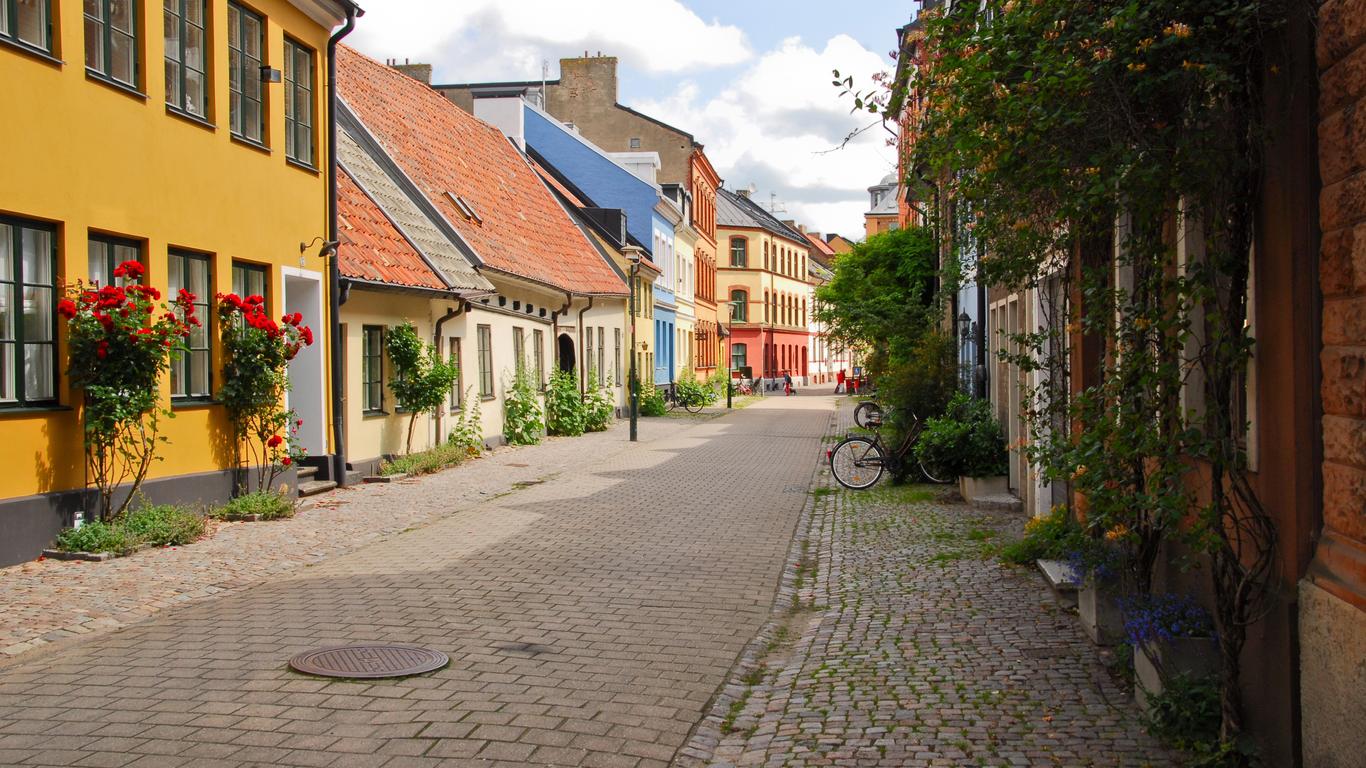
Sweden travel guide
Sweden Tourism | Sweden Guide
You're Going to Love Sweden
History, sleek design, and spectacular natural landscapes are the three main reasons to visit Sweden.

What to do in Sweden
1. Visit Lapland
Lapland is the place to go for outdoor enthusiasts looking for the Northern Lights.
2. Go Beyond Stockholm
In addition to visiting the capital Stockholm, explore the other two top cities in Sweden: Gothenburg and Malmö.
3. Explore the History of ABBA
For pop culture fans, a visit to the Abba museum is a must.
4. Visit the Islands
Be amazed by the Stockholm Archipelago while island hopping.
5. Discover the Swedish Royal Family
Feel like Swedish royalty when touring the Drottningholm Palace, the King and Queen's official residence.
When to visit Sweden
Midsummer's Eve, Sweden's most important holiday, is celebrated in June. November brings you the Stockholm International Film Festival, the Gamla Stan Christmas Market, and the best time to spot the Northern Lights.
How to Get to Sweden
Entry Requirements
Nationals from other Schengen Agreement and European Union countries don't need a visa to enter Sweden and they can travel with their valid identification card or passport.
Most nationals from other countries, including the US, can travel to Sweden visa-free if they're staying for under 90 days.
Plane
Sweden has four main airports, but the majority of international flights land at the Stockholm Arlanda airport.
Göteburg Landvetter (Gothenburg), Stockholm Skavsta, and Sturup Airport (Malmö) are mostly served by flights from other European countries. The main airlines flying to Sweden are SAS, Norwegian, Ryanair, Finnair, and easyJet.
Train
There are regular train connections to Stockholm, Gothenburg, and Malmö in Sweden from Germany, Denmark, and Norway. Trains from Copenhagen depart every 20min and a one-way ticket costs approximately 100 SEK (10 USD).
Car
You can drive to Sweden from Denmark, Finland, and Norway. An International Driver's Permit isn't necessary.
When driving from Denmark, a toll fee will be charged on the Swedish side. The fee can be paid with debit or credit card, or online before you take the trip.
Bus
There are regular buses connecting to Gothenburg or Stockholm from Copenhagen, Tornio, Oslo, and Berlin.
Boat
There are regular daily connections by boat from Denmark, Estonia, Latvia, Poland, Germany, and Norway. Ticket prices vary according to the length of travel and students and children usually get discounted fares.
Popular airports in Sweden
Popular airlines serving Sweden
Where to stay in Sweden
Camping is one of the most popular types of accommodation in Sweden. For budget travelers, hostels are comfortable and affordable options, open to all kinds of guests, including families and older couples.
Where to stay in popular areas of Sweden
Most booked hotels in Sweden
How to Get Around Sweden
Public Transportation
Cities and towns in Sweden are equipped with an efficient public transportation network of trains and buses. The same ticket, under the Resplus system, is valid for both means of transportation.
The city bus fare is around 20 SEK (2 USD) per person. A 24-hour card costs approximately 130 SEK (13 USD).
Trains
Traveling by train is one of the fastest and most comfortable ways to get around Sweden. Trains are operated by Sveriges Järnväg.
Travel passes like the Interrail and the Eurail are accepted on all SJ trains.
Bus
To travel around Sweden by bus, you can choose between the Express Buses (like FlixBus or Nettbus Express) and the regional networks, which are integrated with the train network.
For longer stays, you can buy a seven-day pass for around 335 SEK (35 USD), plus a fee of about 20 SEK (2 USD) for the SL Access card.
Car
Sweden has an excellent road network and you can drive around with your national driver's license. To rent a car, you must be 20 years old with a valid driver's license and a credit card issued in your name.
Plane
Braathens Regional Airlines and SAS are the two local carriers operating domestic flights in Sweden. Domestic flights are a good option for getting around Sweden if you're pressed for time, but it's not the most budget-friendly alternative.
The Cost of Living in Sweden
Sweden is gradually becoming a cashless society, so debit and credit cards are widely accepted as payment. However, because smaller retailers still prefer cash, there are plenty of ATMs available. A meal can range from approximately 100 SEK (10 USD) in an affordable restaurant to about 300 SEK (30 USD) in a more expensive one. Groceries for one week will cost around 200 SEK (20 USD).